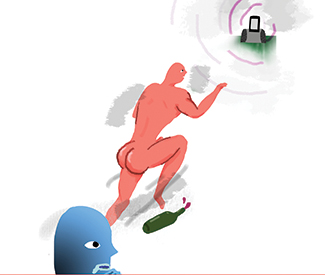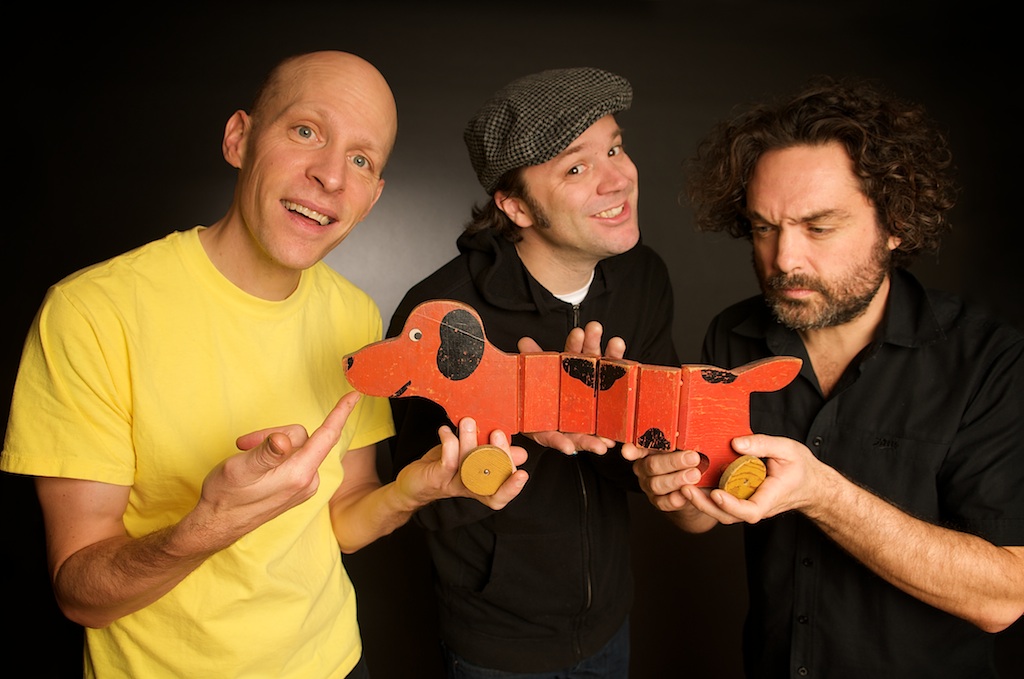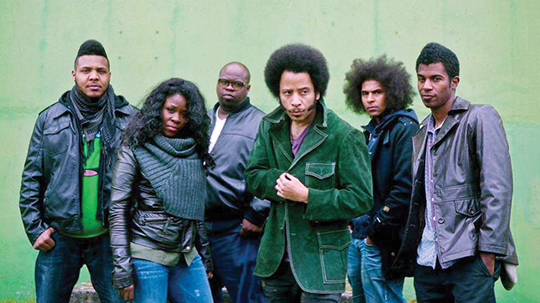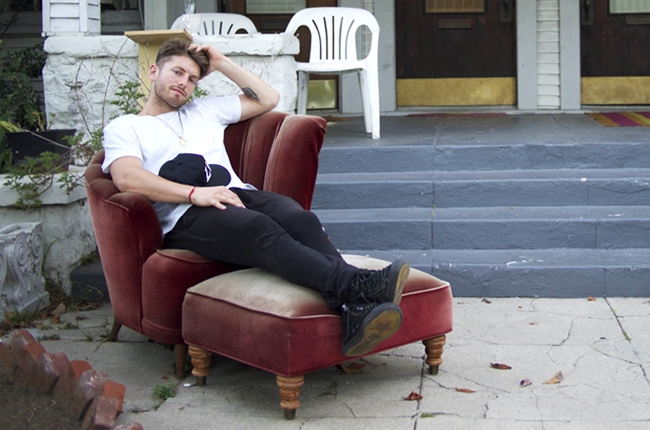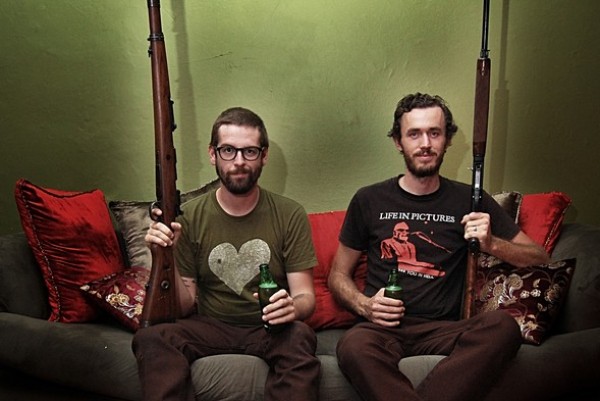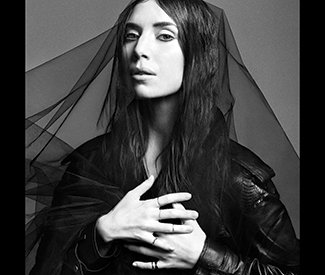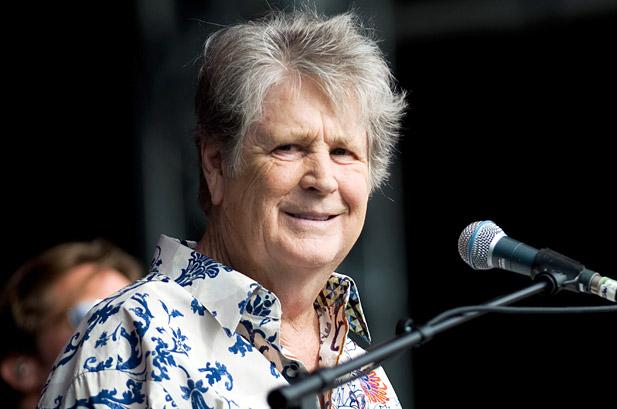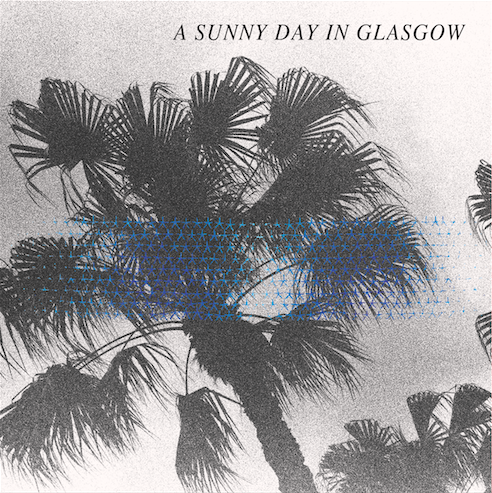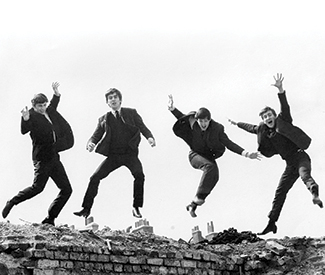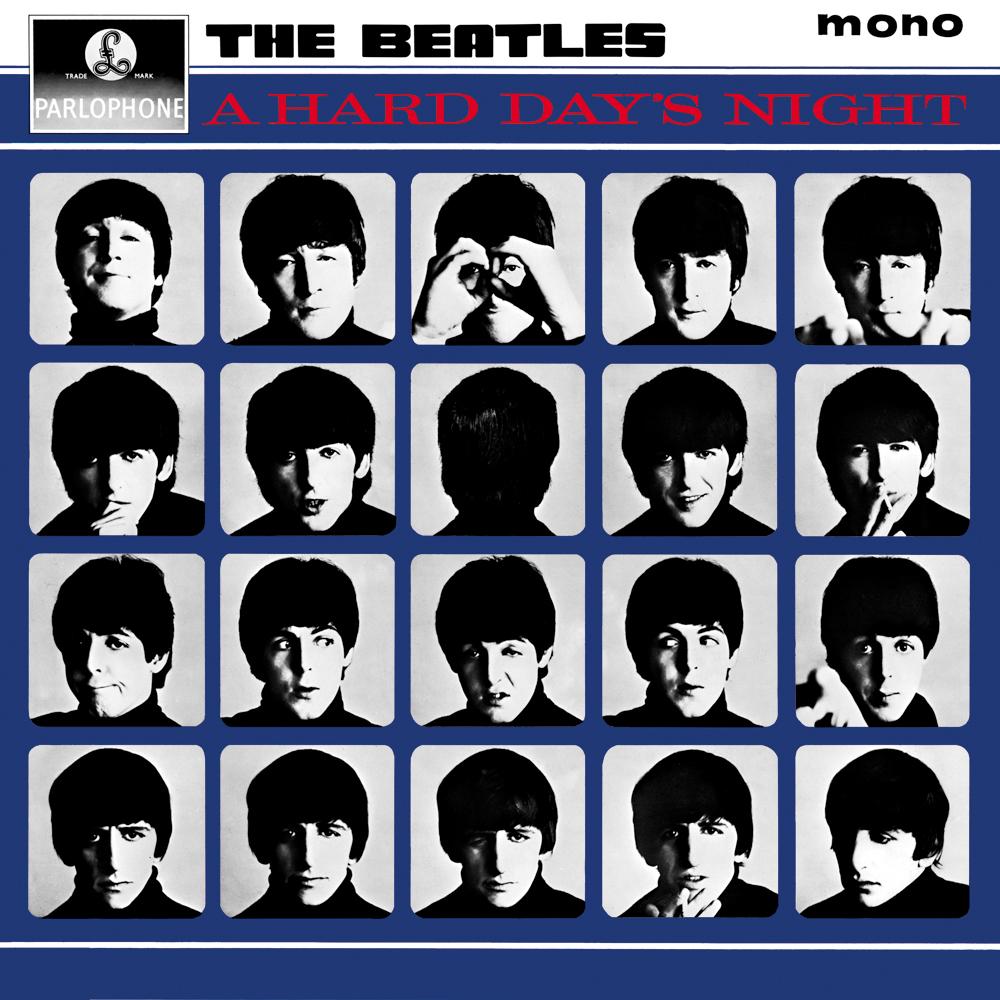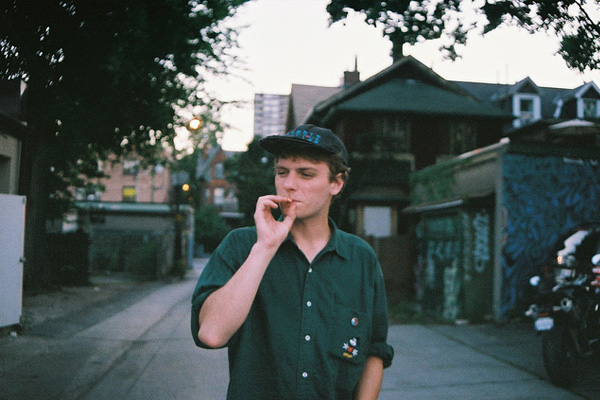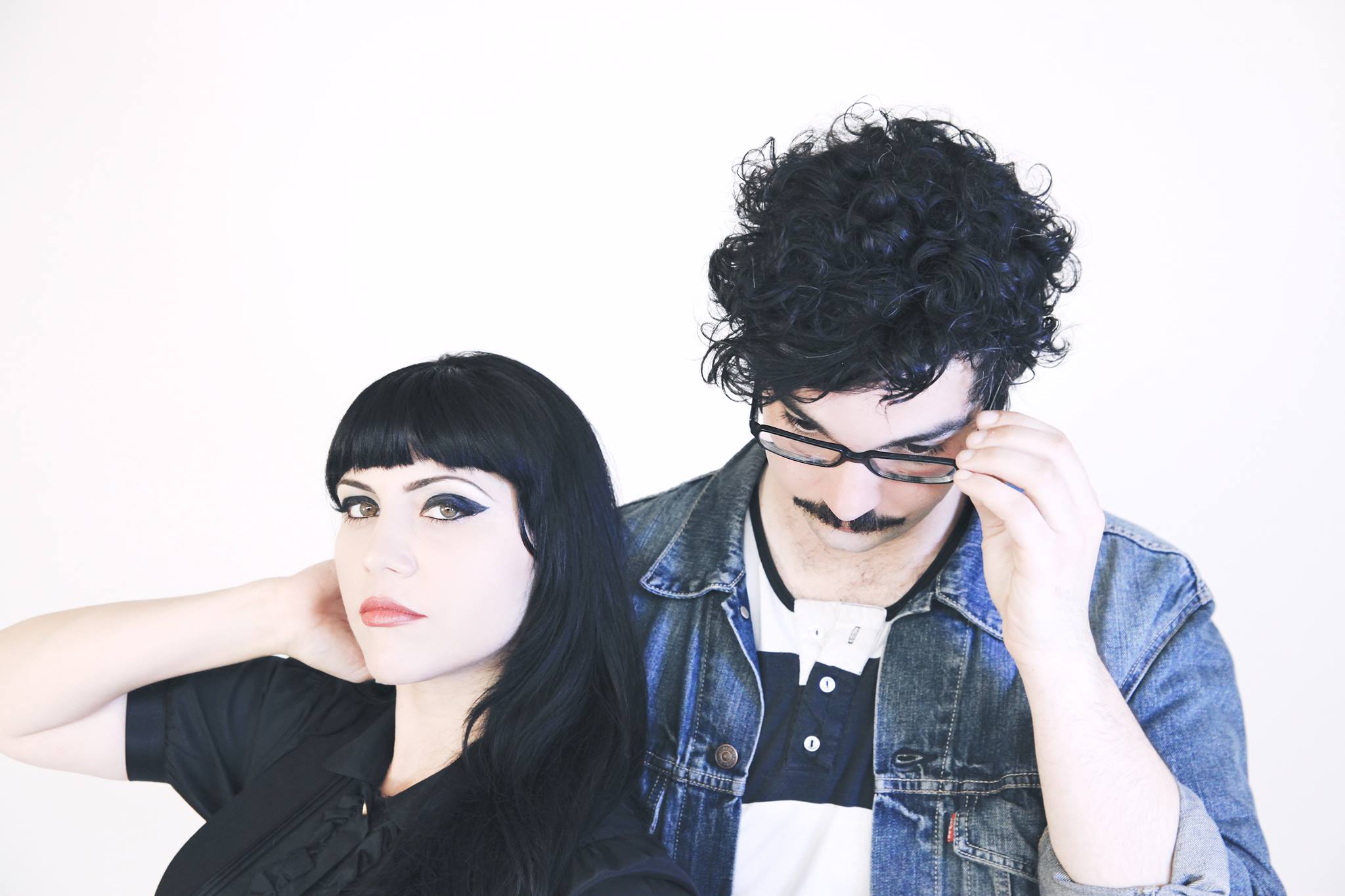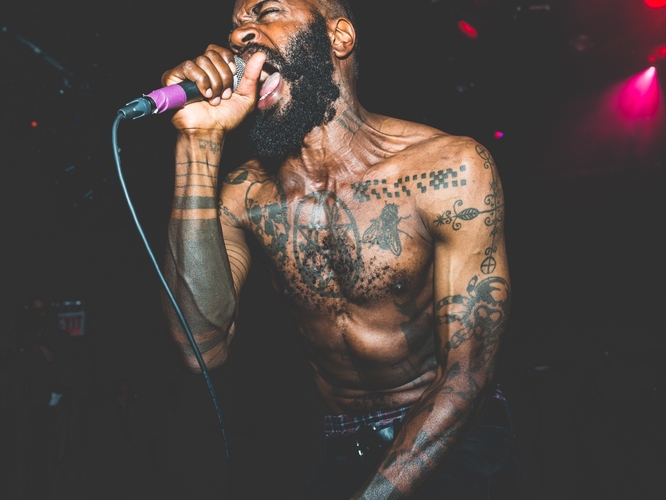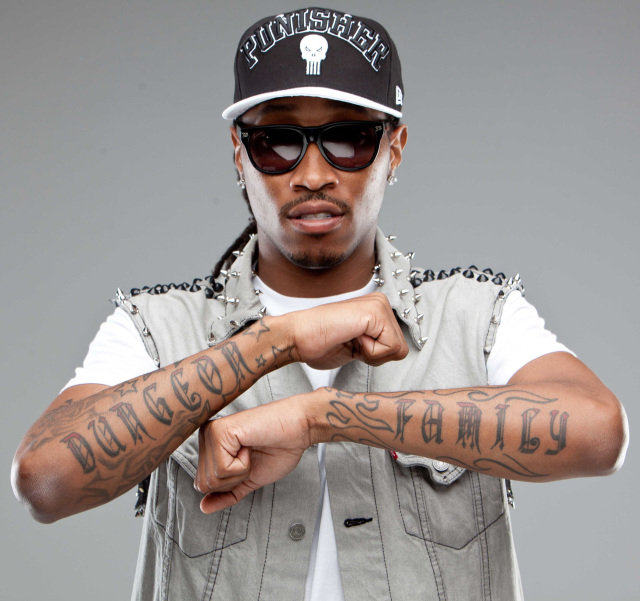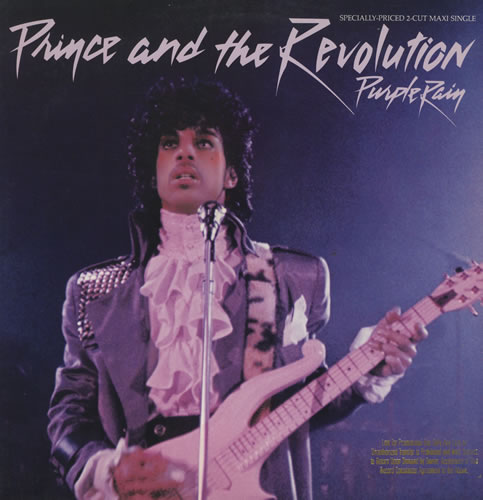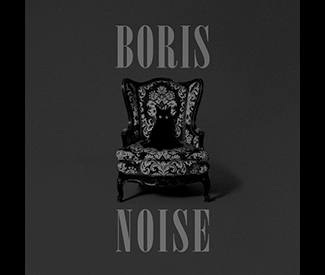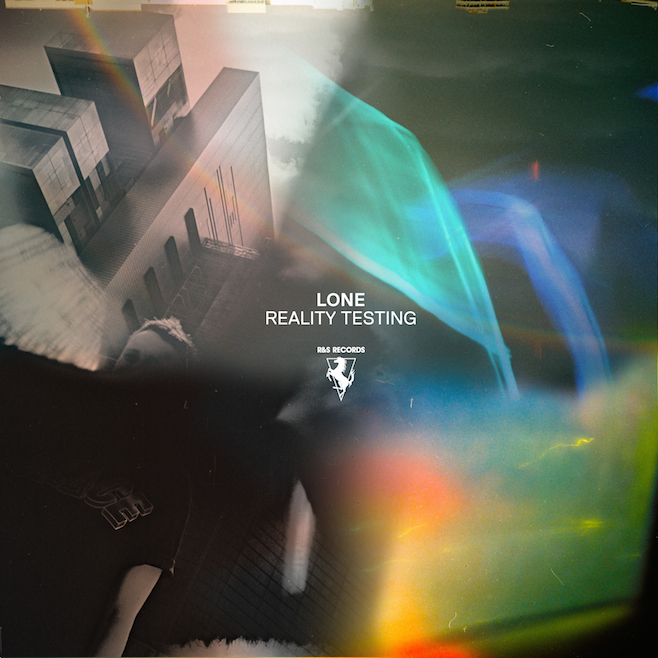About 30 minutes into this year’s Burger Boogaloo, I noticed a guy walking around in a Tool shirt. Ten minutes later, I saw another dude walking around in a Meshuggah shirt. This wouldn’t be so remarkable at most concerts, but it’s worth keeping in mind that this was ostensibly an indie rock concert. Most fans of progressive metal wouldn’t dare enter that often rigid and snobbish universe, just as most indie fans would consider those heavy-but-impeccably-produced bands well outside the accepted parameters of “cool.”
But Burger Babes, Burger Boppers, Burger Bitches, Burger Boys, and Burger Heads are not most indie fans. This is a community that has room for 5-year-olds and 70-year-olds, for classic-rock bar bands and summery beach-pop groups, for queer-as-fuck punk rockers and dudes with handlebar mustaches and chain-link guitar straps. In the often overly cool-conscious world of indie rock, it was not only refreshing but relieving to see a community this accepting. Messrs.Tool and Meshuggah might have been wearing those shirts ironically, but at an event like Burger Boogaloo, it would have been less cool to do so than to wear them with pride and earnesty.

Burger seemed to be willing to throw anything at the audience. And at a single-stage festival with ample seating and few extraneous distractions (a “music & arts festival” this was not), there wasn’t much reason to ignore any of the bands. Given how few of these artists were recognized names outside of very underground regional circles, it seemed like the primary purpose of such a diverse lineup was to introduce the audience to as much new music as possible.
The most striking thing about the Burger Boogaloo lineup was how much older the artists were than at most indie showcases. Of the four headliners, none had a frontperson under 30. Shannon Shaw of Shannon & The Clams is 31; Thee Oh Sees’ John Dwyer is 39; OFF!’s Keith Morris is 58; Ronnie Spector is 70. Milk ‘n’ Cookies have been around since 1973, The Gizmos since 1976, Phantom Surfers since 1988, the Muffs since 1991, and Bananas since 1993. Danny James’ Pear and Reigning Sound both seemed like middle-aged ensembles stuck in the rock era, and they could have as easily opened for Santana as Thee Oh Sees — yet this was not to their detriment, as they were all incredible musicians.
But with the exception of Spector (and Morris to some extent — more on this later), these artists weren’t cross-generational juggernauts or revered influences but rather veteran bands who had honed their craft in obscurity for years. Though the audience could roughly be split into hip kids and older music-scene stalwarts, it was interesting to see both sides of the audience devour such unhip music with equal relish. This indicated to me that Burger fans aren’t looking for the coolest, most cutting-edge music. They’re just looking for a solid supply of rock ‘n’ roll to dance and party to, and Burger Boogaloo provided that and more.
* * *
DAY 1
The first day opened with White Fang, who were either the best or the worst festival opener I’ve ever seen. Frontman Erik Gage walked out in an American flag T-shirt, kissing his guns like the most cartoonish male lover imaginable, before tearing into a short set of songs chiefly about partying and marijuana. Though they were sloppy and lacked any semblance of self-seriousness, they all but blew the two bands that followed offstage. Though Terry Malts and the Trashies were both competent bands with fine instrumentalists, their singers lacked any of White Fang’s charisma.
Wand upped the energy substantially; though they were a good band, I could not get past their uncanny sonic resemblance to Ty Segall, particularly his Fuzz project. But it was Thunderroads that pumped the energy back into the festival. Hailing from Japan, the trio rolled through a set of unhinged, ’50s-style rockabilly songs sung through thick accents that rendered most words incomprehensible except for rock’s great buzzwords — “rock ‘n’ roll,” “tonight,” “everybody.” Needless to say, they didn’t need much more to get their point across.

Next came the aforementioned bar band Reigning Sound, the extremely good surf band Phantom Surfers, and Sacramento punk band Bananas, whose caterwauling vocalist culled the crowd enough to secure me a prime audience position for Nobunny. Though his spirits were significantly lowered by the audience’s refusal to catch him were he to jump from the amplifier stack, the man in the bunny mask still put on one of the best shows of the night. He more than made up for his admittedly lacking vocal skills through a menacingly cartoonish stage presence, ample crotch-bulge display, and above all else, a set of great rock songs.

Next came Milk ‘n’ Cookies, a ’70s power-pop band who could not distinguish themselves from the festival’s more pedestrian pop acts despite their clout. Finally, the big two headliners: OFF! and Thee Oh Sees.
OFF!, the current project of Circle Jerks frontman and founding Black Flag member Keith Morris, was by far the most interesting act at the festival. Morris has long given up adhering (or pretending to adhere) to punk’s staunch anti-commercial aesthetic, evident in his recent promotions with major brands like AOL and Vans (and Burger — OFF! isn’t actually on the label). But he plays punk because it’s the music he loves — and he performs it with as much fury as in any of his previous projects.
And what fury. Despite his short stature, Morris seemed to tower over the sea of moshing kids at which he directed his harangues. It was an invigorating performance in part because of how tight the band was and in part because of how in love with the music Morris seemed — as pissed-off as his songs were, he looked genuinely happy to be up there.

Even better were Thee Oh Sees, whose recent departure for L.A. sent waves of dismay through the Bay Area music community but who are showing no signs of abandoning their hometown fans. Bar none, Thee Oh Sees were the best live band I’ve seen all year. Despite being a relatively new incarnation of the band (singer/lead guitarist John Dwyer being the only constant), they rocked as hard as ever, with Dwyer’s almost Hendrix-like guitarwork carrying the bulk of the sound this time around. But the true star of the show was Dwyer’s voice, a tiny coo that can nonetheless hold an entire crowd captive. He can scream as well as anyone, but why would he need to when he can do so much with so little?

Thee Oh Sees’ music seemed to transcend genre. It was hard to say exactly where the roots of such music lay — there were elements of punk, metal, garage rock, and grunge, but none seemed like an apt signifier. Rather, the hallmarks of each genre combined into a monolithic slab of rock ‘n’ roll that encouraged the audience to move and engage with it rather than analyze it. This focus on rock as a form of music rather than an aesthetic or a concept unified all the bands of the day. At Burger Boogaloo, it didn’t matter how old or how uncool a band was — at the end of the day, it was all about getting down. And isn’t that what a rock show is supposed to be about?
DAY 2
After the head rush of Day One, it was hard not to be a bit disappointed with Day Two. The lineup pulled a lot of the same tricks to diminished effect. A lot of the bands seemed to be the equivalents of bands from the first day. Pookie & The Poodlez played White Fang’s role as the silly, punky opening act; Meatbodies played Wand’s role as the heavy, grooving jam band; The Gizmos filled Milk ‘n’ Cookies’ role as obscure power-pop legends unearthed from the annals of history. But the day also brought with it some pleasant surprises — not least of which was Ronnie Spector, whose dynamite set ran completely contrary to my expectations.
Pookie, a member of Nobunny, showed up onstage still brushing his teeth. (Apparently he’d overslept but luckily lived a few blocks away–though this is a fun story, the aesthetic appeal of a cute, skinny man walking out onstage with a toothbrush in his mouth to open a festival is just a little bit too good.) His set was brief but fun, though the similarities to White Fang’s set were a bit obvious — especially after he introduced one of the songs as being about “Slurpees and kissing and marijuana cigarettes.”
The next run of bands was thoroughly disappointing. Summer Twins were, if possible, even more generic than their name suggests. Though my friend theorized they would sound like “Best Coast but less mainstream,” they sounded more like a Best Coast ripoff hastily assembled for a commercial by someone whose grasp on indie aesthetics was limited to 500 Days Of Summer. I was surprised a label like Burger (or any label) would sign such a band. The beach-rock fad has been over for over three years, and it’s easy to tell when a band is still clinging to it — usually they have words like “Summer” or “Twins” in their name.
Dirty Ghosts were interesting only because they were difficult to pin down in a genre — their music wasn’t quite funk, rock, punk, or psychedelia, but it was largely forgettable and didn’t benefit from its implacability. Danny James was similar to the previous day’s Reigning Sound but a lot tighter. La Sera was essentially a better version of Summer Twins. Meatbodies sounded like a less heavy Wand, while the Gizmos played with little effort or enthusiasm and could only have been there because of their clout as an obscure but veteran protopunk band.
Of the mid-day acts, folk singer Juan Wauters was the most enjoyable, but it was hard to tell if it was because of the quality of his music or because he was by far the most unique attraction of the day — he initially performed as a solo artist before being augmented by a bassist, a guitarist, and a percussionist. San Francisco band Personal & the Pizzas were likewise entertaining, but their schtick–pop songs about pizza and brass knuckles played by three tough-looking dudes–got old very quickly.
The Muffs ramped up the energy substantially. Fronted by Kim Shattuck (best-known these days for her brief stint in the Pixies), the group started out playing tough yet grooving pop songs driven by Shattuck’s ferocious voice. (She screamed an average of about 10 times per song.) Yet their set never recovered from an ill-advised mid-performance slow song, which disrupted what could have evolved into full-on moshing but never progressed beyond a lot of enthusiastic bouncing and head-nodding.

Shannon & The Clams were a fine act, but they were disappointingly low-energy for their late placement in the lineup. Their show was better because the crowd, desperate to mosh, took it upon themselves to have a good time. The result was a bizarre sort of mix of moshing and slow-dancing that mainly entailed a bunch of people shoving into each other at very deliberate speeds. Being in the mosh enhanced the performance substantially; the Clams’ girl-group balladry was best suited for slow dancing, and brushing up against a bunch of random strangers with romantic music in the air is pretty much the second-best thing to that. Nonetheless, the fast-paced “The Cult Song” was the undoubted highlight.
I was expecting Ronnie Spector‘s set to be mostly just a glorified celebrity appearance from the woman whose run of Sixties records with the Ronettes inspired a substantial chunk of the festival’s acts. Instead, I was surprised to be treated to the night’s most electrifying performance. Over a top-caliber band of stern, professional-looking musicians, Spector let loose with her vocals in a way she was never able to do as part of the homogeneous Wall of Sound her ex-husband/producer Phil Spector pioneered. Some of her vocal turns were absolutely haunting. Though she may not sound like the twenty-year-old starlet she once was, she sounds now like what she is–an incredibly gifted vocalist with a natural presence as an entertainer and a long and tumultuous life behind her.

But the true star of Spector’s set wasn’t her or her beehive hairdo but the songs, and one song in particular. The words “Be My Baby” had been placed over the stage in gold balloons hours before, and the inevitability that she would perform it created a natural climax to the festival. Either directly or indirectly, that song had inspired nearly every act there. Its maelstrom production practically launched psychedelic rock, while its unmistakable drum opening has become an obvious way for backwards-looking pop acts from The Jesus And Mary Chain to Girls to pay tribute to their influences.
True, that drum opening was the most scream-inducing moment of the entire festival. But I felt she played it too soon. Her set was much shorter than it should have been, and deploying the ultimate weapon after only five songs ruined a bit of the song’s climactic nature. Furthermore, her shout of “my favorite part!” over the reprise of the drum opening defused its impact. But I forgive her — I don’t know if she realizes how revered that song is in the indie community.

Furthermore, treating that song like a sacred artifact would be incongruous with what made Spector’s set so effective — that she wasn’t treated like a sacred artifact. As massive as her influence pop music is, I believe she was there because of her skills as a performer, not for the baggage her name carries. It would be contradictory to Burger’s ethos to bring such a revered artist on if she wasn’t a great performer. Burger Boogaloo isn’t about the mythology of old-school rock ‘n’ roll, but about the sound — and just how great it is to hear that sound live.


